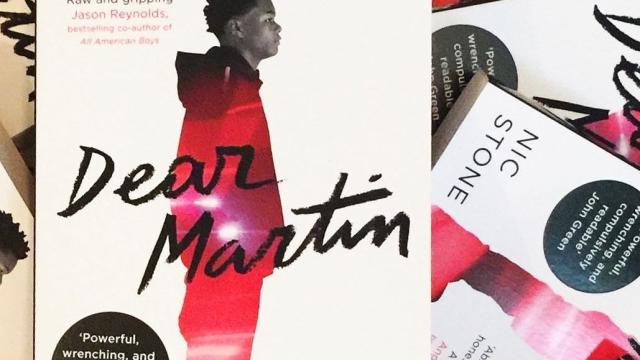US teenager Trayvon Martin was shot dead in 2012 by a neighbourhood watch volunteer, George Zimmerman who was later acquitted of the murder. This saw the rise of the Black Lives Matter movement. The racist social and political issues in the US saw the deaths and violence on Black bodies brought front and centre through acts of protest.
The arguments against the alleged police brutality in the US were easily translatable to the Australian context.
The Black Lives Matters movement was renewed following the death of George Floyd at the hands of Minneapolis police officers in May 2020. And together with US counterparts, tens of thousands of Australians marched across our cities to draw attention to racial profiling, police brutality and the more than 400 Indigenous people who have died in police custody since a royal commission into the problem was held in 1991.
The global movement brought unprecedented sales of books about race and anti-racism. This turn toward texts is indicative of the role they play in helping us make sense of major social issues.
Angie Thomas, author of the 2017 bestseller “The Hate U Give”, has spoken about the role of literature in igniting awareness, resistance and change.
I think books […] play a huge role in opening people’s eyes and they’re a form of activism in their own right, in the fact that they do empower people and show others the lives of people who may not be like themselves.
Research has long shown a link between the books we read and our development of empathy. But more recent research has highlighted it is important we don’t see books as immediate fixes to complex social issues, especially when we import these books from other locations and times.
Our reading must be accompanied by close attention to the ways racism and prejudice unfold in our own location.
Coming to understand the impact and complexity of racism in this way is referred to as “racial literacy”. Here are five books that can help young people build racial literacy around the varied forms of racism and discrimination.
1. Dear Martin
by Nic Stone
Dear Martin explores issues of race through the eyes of conscientious 17 year old, Justyce McAllister.
Built around the central question, “What would Martin (Luther King) do?”, this novel brings to light the litany of decisions and ethical conundrums thrust into Justyce’s lap daily, as he navigates a world affected by racism and prejudice.
2. Punching the Air
by Ibi Zobai and Yusuf Salaam
But the story stands as a haunting reminder of the inequalities experienced by Black men and the life-altering consequences this can wreak on innocent lives.In 1989, five young men were falsely accused of the assault and murder of a jogger in New York’s Central Park. Now documented in Ava Duvernay’s Neflix miniseries When They See Us, the Five were exonerated 12 years later.
One of these young men, Yusuf Salaam, collaborates with award-winning author and prison reform activist Ibi Zobai, to craft a story that examines these themes through a narrative of a wrongfully incarcerated young man navigating his teenage years in prison.
3. Growing Up Aboriginal in Australia
edited by Anita Heiss
Particularly noteworthy are the chapters by Ambelin Kwaymullina and Celeste Liddle, in which the authors describe both the nature of racism experienced by them from the schoolyard, and the broader historical context on which this racism is based. This anthology of 50 chapters provides an opportunity to deeply listen and understand the lived experiences of Indigenous Australians and the ways racism takes all manner of overt, subtle and systemic forms.
4. Slay
by Brittney Morris
When an offline murder is traced back to the game, Kiera grapples with the complexity of both the implications of her creation and the conversations it triggers.This novel centres on 17-year-old Kiera, a talented young developer who creates a multiplayer role-playing game. The game is a “mecca of black excellence” and an escape from the racism often experienced by those “game-playing while black”.
Slay weaves social commentary into the dialogue between characters from all walks of life, covering everything from cultural appropriation, to whether racism can ever be “reversed”.
5. Living on Stolen Land
by Ambelin Kwaymullina
Many books here centre around the kind of racial stereotyping and violence that put the Black Lives Matter movement on the map. But understanding racism in the Australian context also involves examining colonialism and the racist underpinnings of our history.
Living on Stolen Land centres Indigenous sovereignty in the conversation about race. Using prose verses such as those titled “Bias” and “Listening”, it leads readers through examining unconscious beliefs and moving toward being a genuine ally of Indigenous people.
Author and educator Layla F Saad has suggested when we read texts about social issues like racism, we read for transformation, not merely information.
A range of texts have been developed to support families in having these transformative discussions together. Maxine Beneba Clarkes’ “When We Say Black Lives Matter”, for instance, is a beautifully illustrated picture book that focuses on the strength and resilience of black children and communities. While texts like Our Home our Heartbeat by Adam Briggs centres on key Indigenous figures to be celebrated.
This article on books and racism is republished from The Conversation under a Creative Commons license.

Leave a Reply
You must be logged in to post a comment.